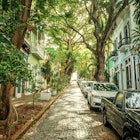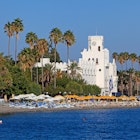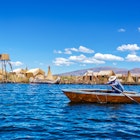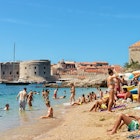
May 7, 2025 • 7 min read
Experience the best of Puerto Rico’s capital with this rundown of the top things to do in and around town.

May 7, 2025 • 7 min read
Experience the best of Puerto Rico’s capital with this rundown of the top things to do in and around town.

May 7, 2025 • 8 min read
The beautiful Greek island of Kos caters to everyone.

May 7, 2025 • 7 min read
Plan your time and budget in the captivating Central European country of Czechia with our guide for first-time visitors.

May 7, 2025 • 6 min read
To make the most of your time and travel budget in Tokyo, use this guide to help you decide where to spend and where to save.

May 6, 2025 • 8 min read
The notion that visiting NYC is requisitely expensive is a myth. There are myriad bargains (and freebies!) to be found; you just have to know where to look.

May 6, 2025 • 7 min read
New York City's Roosevelt Island offers a mellower version of the city's high-energy life.

May 6, 2025 • 9 min read
Botswana is a joy to explore - but even more rewarding with these tips.

May 6, 2025 • 9 min read
Sumatra is famed for its biodiversity, volcanic landscapes and lush rainforests. Hike, surf and learn about its diverse cultures with these top itineraries.

May 6, 2025 • 6 min read
Don't miss the best flavors of Croatia with this guide to the top things to eat and drink.

May 6, 2025 • 4 min read
The beaches, docks, decks, platforms in Copenhagen make it one of the best cities in the world for swimmers.

May 6, 2025 • 9 min read
Plan your time in Chattanooga, “the Scenic City,” with these top experiences.

May 6, 2025 • 13 min read
From Rīga’s art nouveau architecture to sprawling Baltic beaches to medieval castles in the countryside, discover the best Latvia has to offer.

May 6, 2025 • 13 min read
Plan your time in Greece with our pick of the best islands.

May 6, 2025 • 12 min read
You'll find stone-walled creperies, traditional dancing festivals and fisherman singing centuries-old sea shanties in the charming town of Brittany.

May 6, 2025 • 10 min read
Here’s our multi-borough guide to some of the most exciting neighborhoods in the Big Apple.

May 6, 2025 • 5 min read
Fantastic France has something to offer travelers every month of the year. Here’s a full season-by-season guide.

May 6, 2025 • 11 min read
New York City is home to 1700 parks. Throw on your sneakers, pack a picnic or grab a book and a blanket for some quality outdoor time in the ultimate city.

May 6, 2025 • 5 min read
World-class art, atmospheric neighborhoods, daytime markets plus nighttime clubs total an unforgettable 48 hours in the Netherlands' capital.

May 6, 2025 • 13 min read
From exploring the Inca ruins of Peru to riding Lisbon’s trams, here's where to widen your horizons without breaking the bank.

May 6, 2025 • 6 min read
From Split to Dubrovnik and beyond, see historic cities, gorgeous coastlines, islands and national parks with these itineraries through Croatia.

May 5, 2025 • 4 min read
You can choose from a variety of sustainable public transport options when visiting Copenhagen.

May 5, 2025 • 12 min read
Florida is well known for its sunshine and beautiful beach towns. Here are the 12 best ones for you to visit.